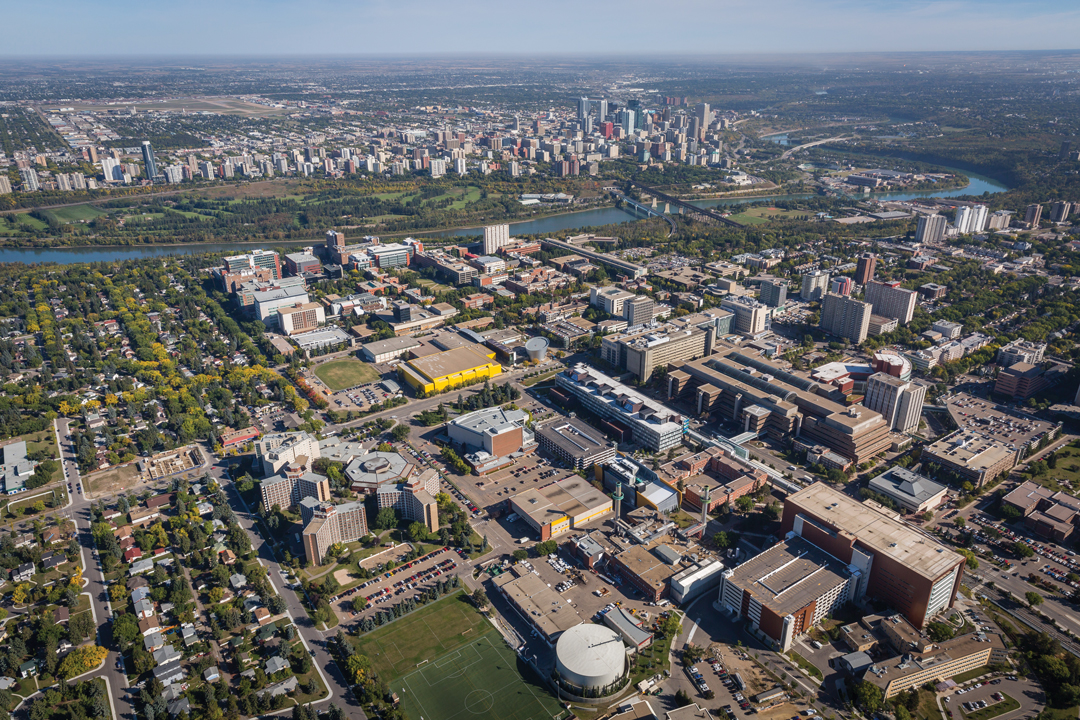EXAMINING A NEW STRATEGY
HOW DO WE MAXIMIZE OUR AGRICULTURAL RESEARCH INVESTMENTS?
BY STAN BLADE
Last year, the Agricultural, Life and Environmental Sciences (ALES) faculty at the University of Alberta underwent an international review led by professor Robert Easter. Easter served as president of the University of Illinois following a distinguished tenure as dean of its College of Agricultural, Consumer and Environmental Sciences. I was very pleased that the first recommendation put forward by Easter and his team of accomplished academic leaders was that, based on the success achieved within ALES, the faculty should “provide leadership in interdisciplinary research initiatives at the U of A.”
We appreciated the recognition of our success but it made me think that agricultural institutes have long been leaders in maximizing the value of such research partnerships.
When the Broadbalk Winter Wheat Experiment was launched at the Rothamstead Research Station near London, England, the intent was to measure the effect of various fertility treatments on winter wheat yield. It has been ongoing since 1843. The breakthrough at Broadbalk was to use this, the world’s longest continual field trial, to generate additional information.
Broadbalk has yielded data on weeds, fungal diseases, insects, the physical properties and microbiota of soil and much more. All this is possible because various researchers can access the plots to address questions that are important to their individual disciplines. I would class this type of work as multidisciplinary but with limited collaboration between areas of expertise.
Over the years, the agricultural community has become much more involved in interdisciplinary research. This is where teams of subject matter specialists represent their own scientific expertise but the project outcomes are synthesized to connect knowledge and perspectives.
My first experience of this as a researcher was during my time in international development. We were developing new cultivars of cowpea, a grain legume that originated in sub-Saharan Africa and is also known as black-eyed pea in the southern United States. The aim was to increase yields in the intercropping systems of several countries in West Africa. The overall goal of our program was to improve the livelihoods of rural families in the region. The team included plant breeders, cropping-system agronomists, plant physiologists, entomologists and plant pathologists.
The team also included social scientists who documented what rural families identified as their major challenges in improving their lives. There were economists who quantified the benefits of new, higher-yielding cultivars and also assessed how the increase in household income was spent—family health care improved and girls enrolled in school. The team also included food scientists because some of the first promising cultivars took much longer to cook, which had implications for expensive fuel use within the households.
In recent years there has been much more interest in the idea of transdisciplinary research. My definition of the term is an even broader set of people, viewpoints, expertise and issues being incorporated into a discovery program. During my time as a Genome Alberta board member I have been impressed by the commitment of Genome Canada and its regional agencies to supporting what has been dubbed GE3LS research. It is a major component of the organization’s funding of genomics research and innovation. In addition to important work in agriculture, food, forestry, health and energy, that aims to advance the science of genomics (G), Genome Canada also engages experts to address the ethical, environmental, economic (E3), legal (L) and social (S) aspects of this work.
This new approach has been developed in response to having the innovation process derailed when scientific breakthroughs have been stuck in the lab due to regulatory constraints and public concern.
Fortunately, the way researchers and the community work together has evolved in a positive way. Investments in research need to generate value if Canada and our industry are to remain relevant in the face of global competition. The move to transdisciplinary research has its challenges. Various disciplines struggle to find common language and there has to be a great deal of give and take in the research process. Scientists are developing new approaches to assembling teams and recognizing that there is value in diverse points of view. In the case of agri-food research, the conversation includes farmers, processors, retailers and consumers. This inclusive approach is clearly the way to achieve the greatest impact for our sector.
Stan Blade, PhD, is dean of the Faculty of Agriculture, Life and Environmental Sciences at the University of Alberta.







Comments